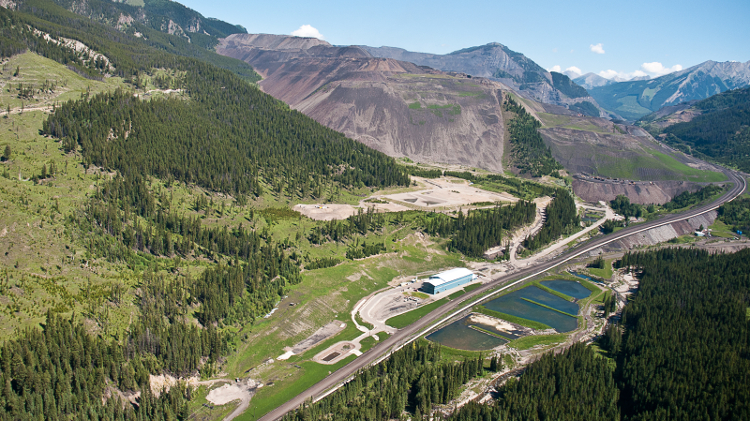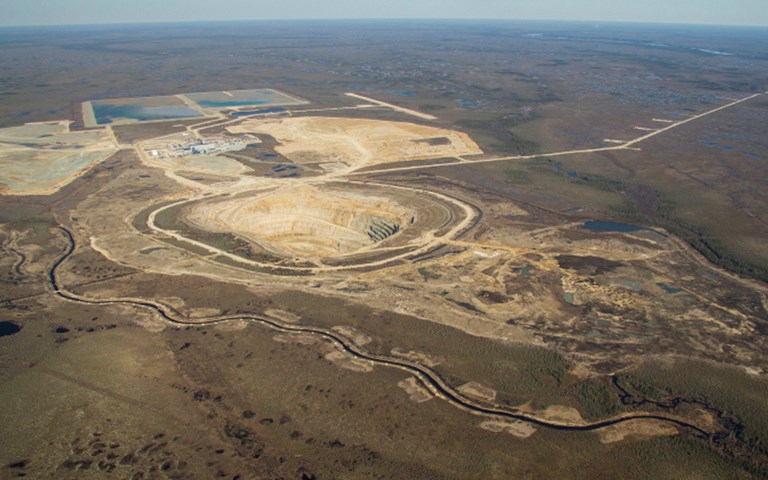The Victor mine opened in 2008 and has produced about seven million carats to date. Courtesy of De Beers Canada
De Beers Canada will close its Victor diamond mine in northern Ontario in the first quarter of 2019, the company announced Wednesday.
The company had previously said it hoped to extend the mine’s life, but De Beers Canada spokesman Tom Ormsby told CIM Magazine the company determined it would not be economically viable to keep it running.
“The factors were really economic,” Ormsby said. “We’ve been running various scenarios, conceptual studies and doing a lot of analytics on the kimberlite that’s there and what our costs are. Victor just wasn’t going to give us the economic returns.”
It was also studying an expansion project to develop the nearby Tango deposit, which would give Victor another five or six years, but shelved it in February after failing to get support from the nearby Attawapiskat First Nation, whose community is located 90 kilometres east of Victor.
But Ormsby emphasized that even with support from the Nation, the Tango expansion would not have been enough to make the mine viable. “We examined some of the other pipes on the property, and through that whole process Tango would have the best shot of any of them,” he said. “But based on our fixed costs, Tango’s just not going to make it right now.”
The mine, which was Ontario’s first diamond mine, will operate at full production for the rest of its life, and will also process low grade stockpiles in 2018 and through to the end of production. In 2016, it produced 596,000 carats.
RELATED: At Goldcorp’s El Sauzal mine, timing, logistics and oversight bring the mine to a satisfying close
After the open pit is depleted, demolition and environmental monitoring will take an expected three to five years, De Beers said. Progressive reclamation work, including planting more than 200,000 tree saplings and willow stakes, has been going on for years.
“While we are focused on continuing to maintain production for the duration of operations, we are also planning responsibly for Victor mine’s closure,” De Beers Canada CEO Kim Truter said in a statement.
The mine opened in 2008, six months ahead of schedule, and has produced about seven million carats to date, exceeding the company’s original projections that it would produce six million over its life.
There are roughly 450 employees at Victor, including full-time staff and contractors, Ormsby said. Some may end up at De Beers' new Gahcho Kué mine in the Northwest Territories, and the company plans to help employees with the job transition. “This is an unbelievable workforce,” he said. “The mine has done everything it has been asked to do, it withstood two economic downturns. I’d be looking to scoop up this team.”
De Beers let employees know of the closure at a town hall on Tuesday night. “The meeting was tough,” Ormsby said. “It’s a great team and such a quality asset for us, one of best we have, that’s why it’s so heartbreaking.”
Earlier this year De Beers announced it had begun flooding its Snap Lake diamond mine in the Northwest Territories as part of its extended care and maintenance. The technically challenging mine failed to make a profit for the company since it opened the same year as Victor. It was put on care and maintenance in December 2015 and put up for sale in July 2016, but the company failed to find a buyer.
De Beers opened Gahcho Kué, which is expected to produce 54 million carats during its life, last September. The arctic mine has already increased the company’s carat production five-fold to 1.1 million carats in the third quarter of 2017, up from 0.2 million at the same time last year.




